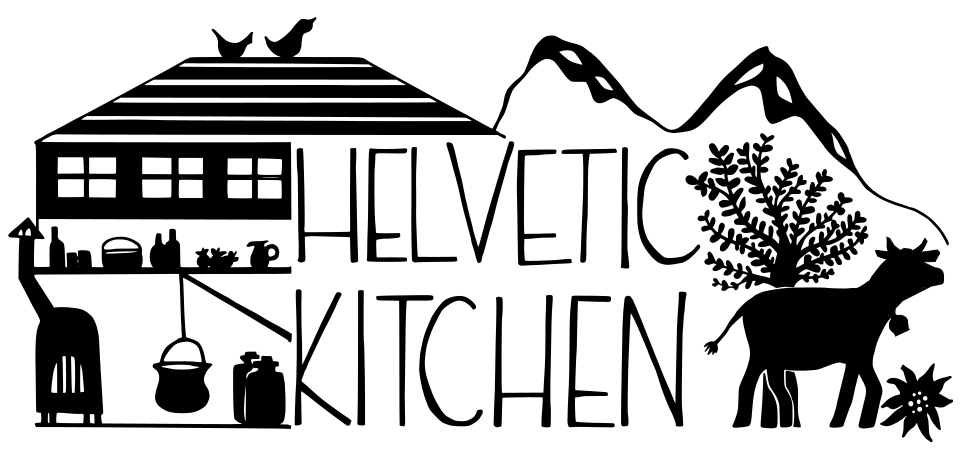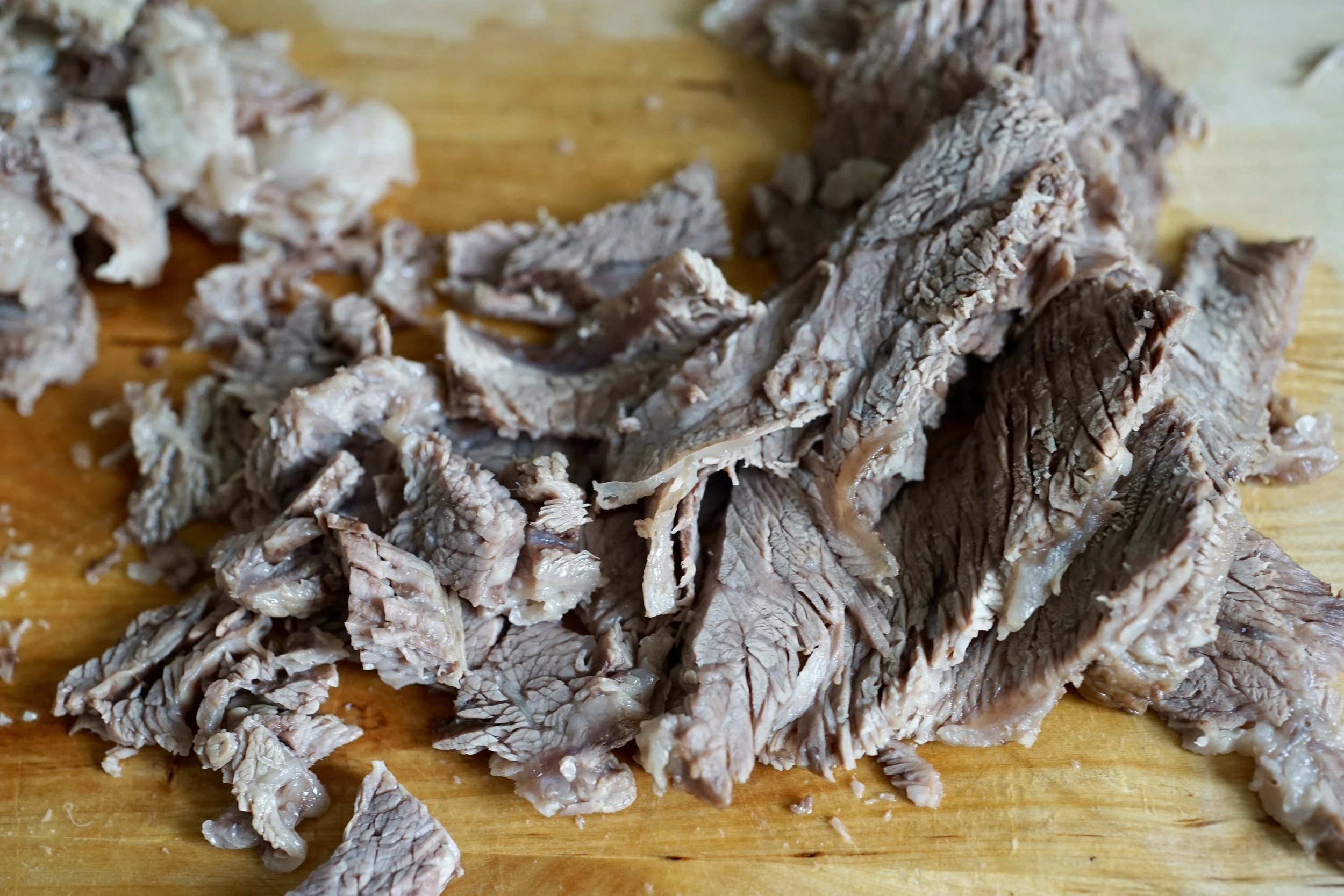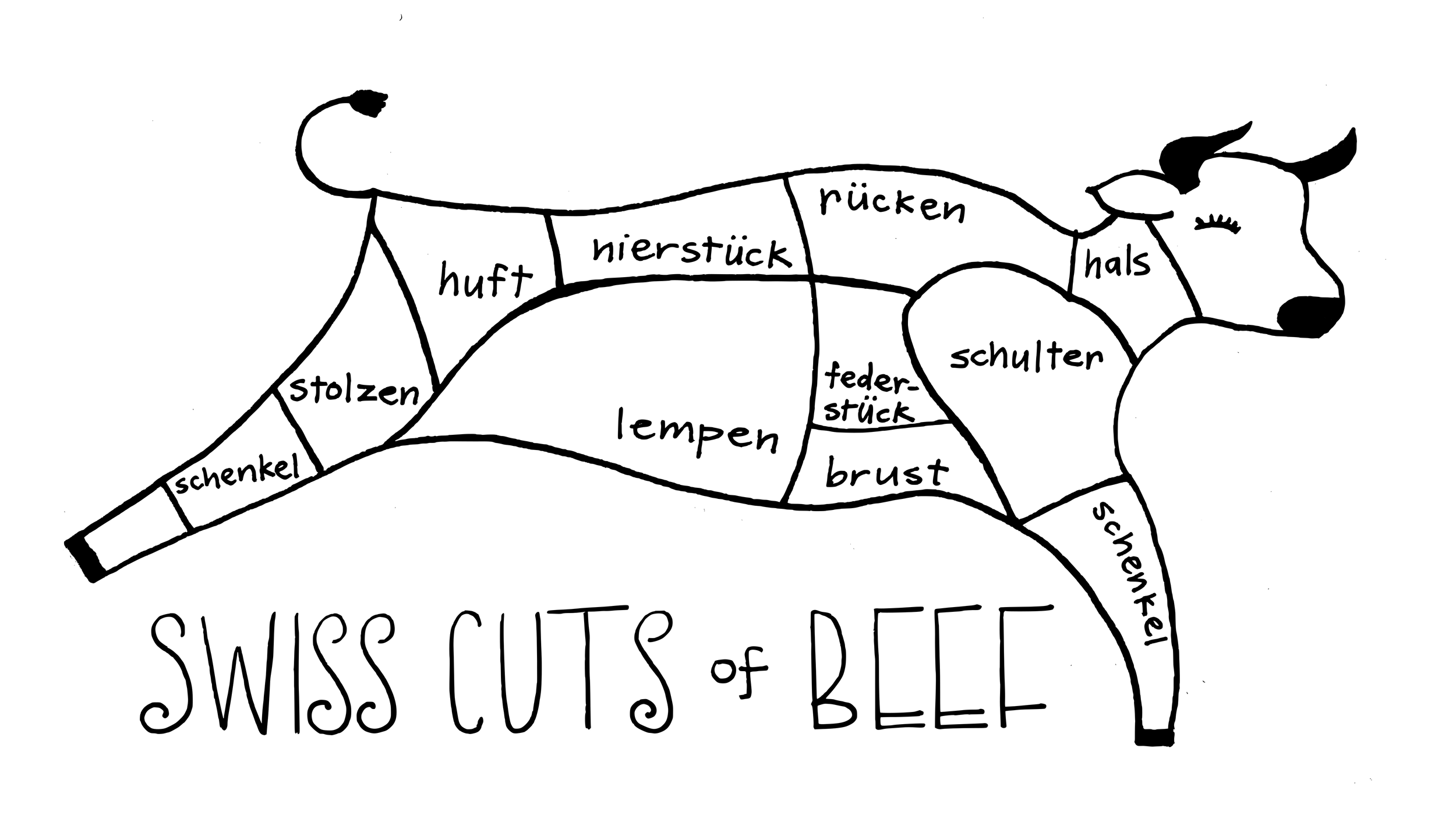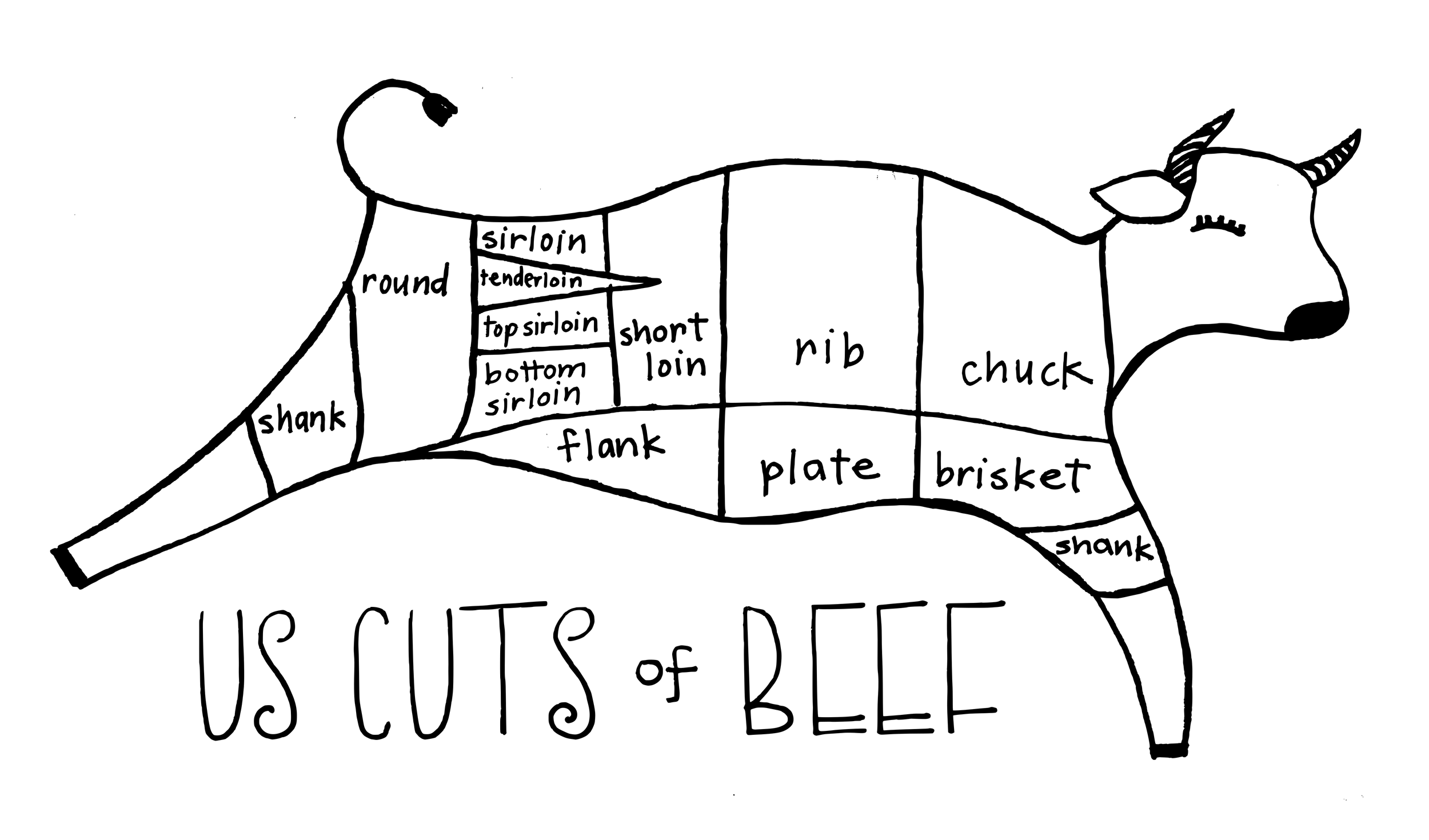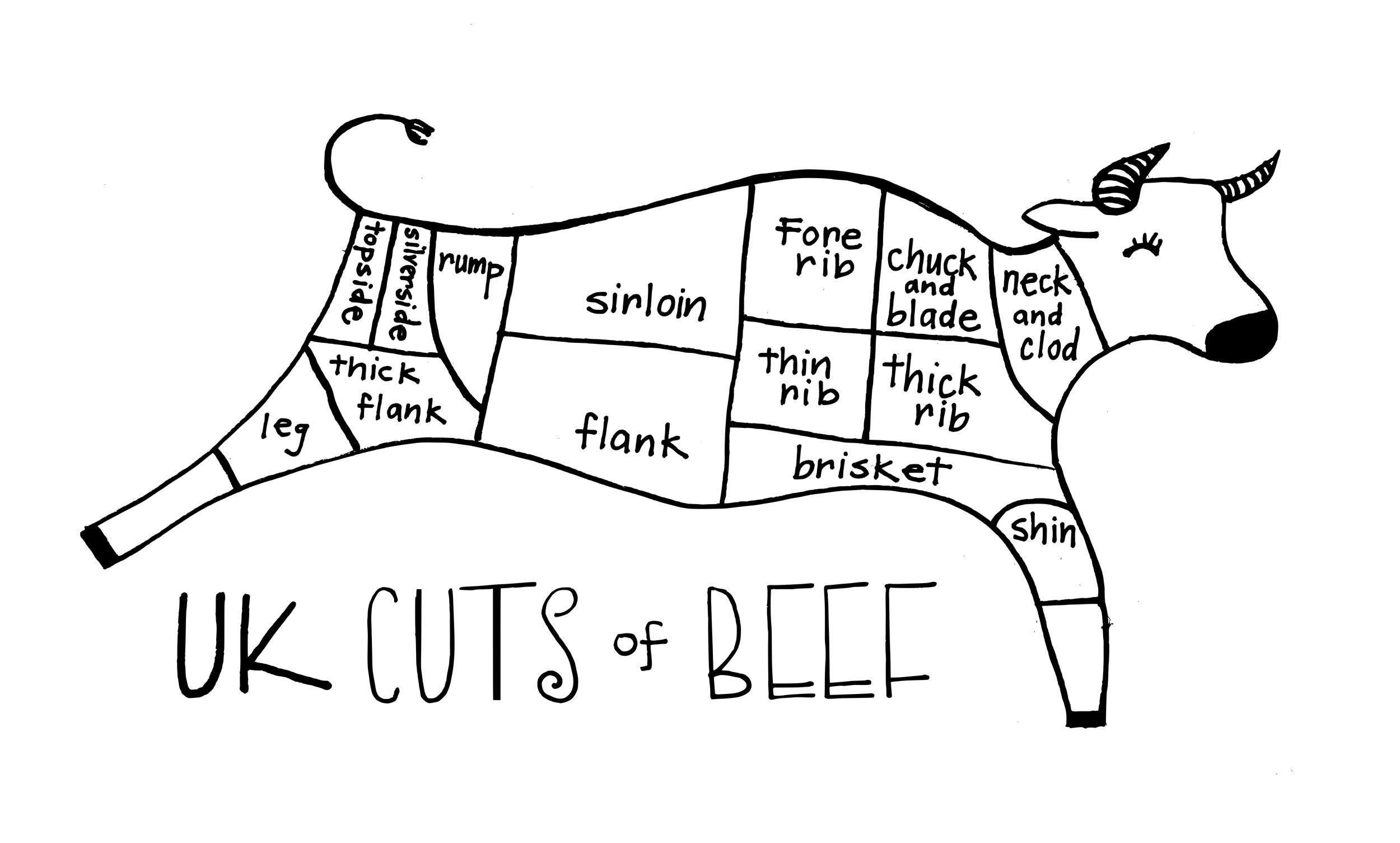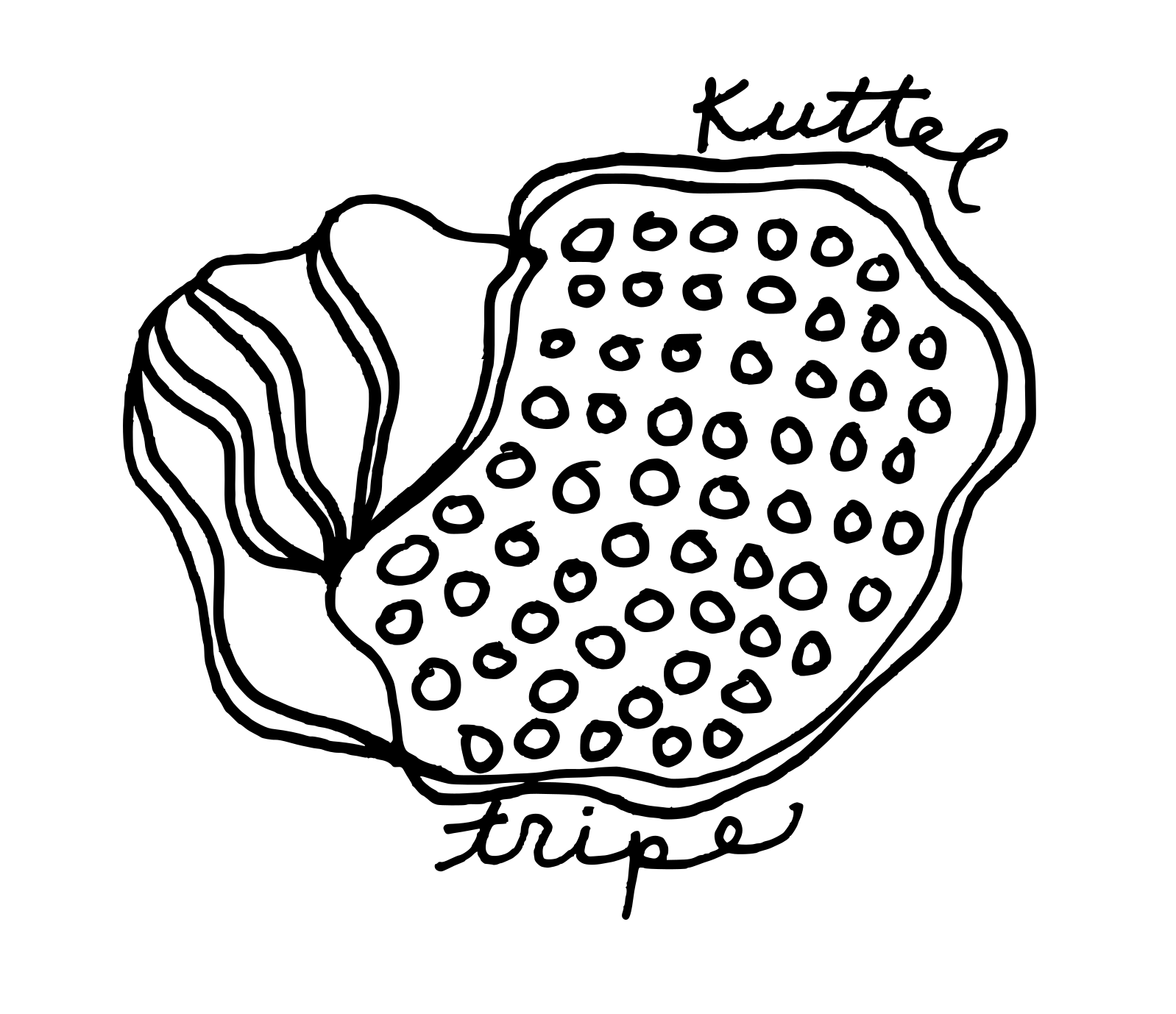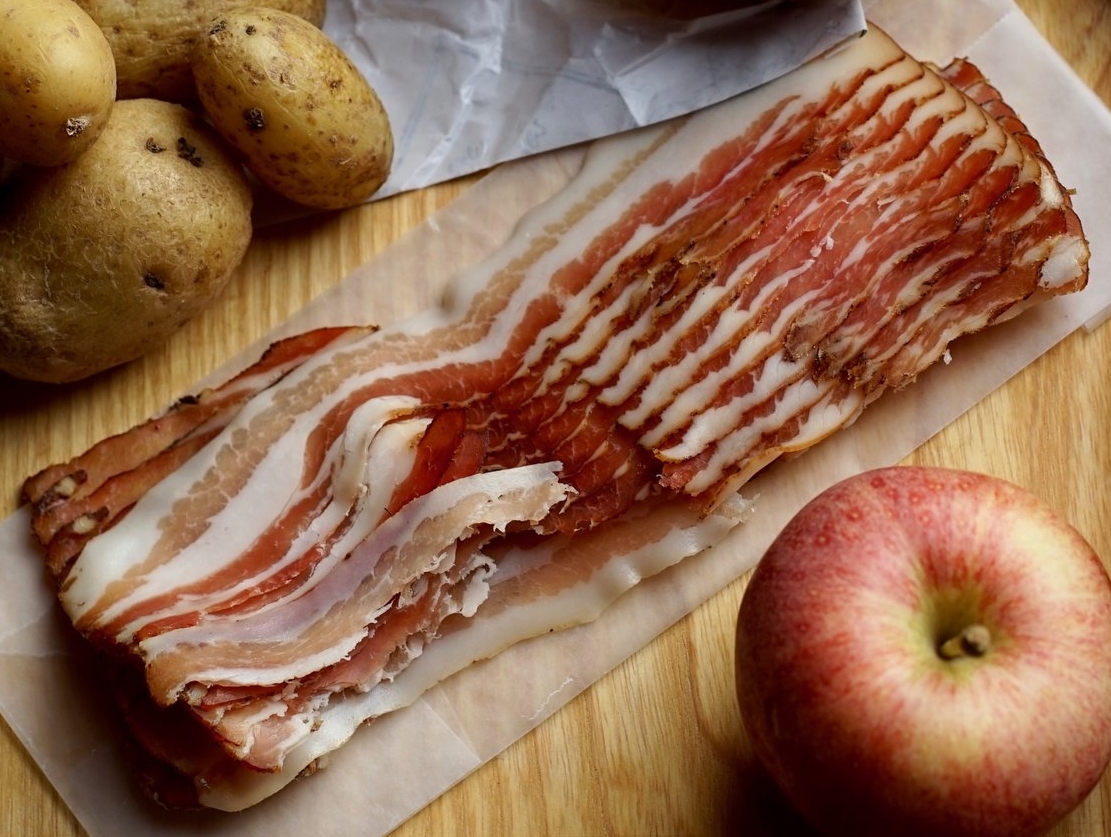Swiss Cuts of Beef
Every country butchers its animals slightly differently. American butcher illustrations show about 13 main beef cuts, while the French have 29. Even the Swiss and German cuts differ from each other.
As I am always confused about the cuts and what they are called, I attempted to educate myself. So, I did some extensive googling and read a book about Swiss meats (see resources below).
Now please accept my best rendering of Swiss, US, and UK cuts of beef.
(Not every single cut is directly translated, because unless you have a native butcher, you won't necessarily find the cuts you would find at home.)
The front half of the cow is normally meat that becomes its best self after a longer cooking time and some tender loving care.
Brust—brisket (UK)—plate (US)
Federstück—thin rib (UK)—rib (US)
In Switzerland, they often use the Brust and Federstück as boiling meats, called siedfleisch (I've seen this called boiling beef in English). Federstück is typically the meat you would use for Siedfleischsalat. If you're looking to make brisket, pho, corned beef or pastrami, these are the cuts for you.
Lempen—Flank (US/UK)
The Swiss often use this part of the cow for stews and soups, but in the US one part is the quick frying flank steak (skirt steak in the UK) and the rest is normally ground.
Hals—Neck and Clod (UK)—Chuck (US)
The muscly and lean neck meat is typically ground into chuck in the US/UK or used for flat iron steaks. This might be also used for stews, soups, or braising.
Schulter—Thick Rib (UK)—Chuck (US)
The shoulder of the cow is split into three cuts:
Schulterfilet: this can be used for Steak Tartare and steaks, as well as stews
Schulterspitz: would be used for pulled beef and flat iron steaks
Dicke Schulter: is stew and braise-worthy, as well as having the right kind of beefy flavour for dried charcuterie and ground beef
Rücken—Fore Rib/Chuck and Blade (UK)—Rib (US)
The back of the cow is split into two parts:
Hohrücken: this part gives you the rib eye steak and côte de boeuf/rib steak
Hohrückendeckel: is lean and used for stews and braising
The back half of the cow normally has the tenderest and most sought after cuts of meat.
Nierstück—Sirloin (UK)—Sirloin and Tenderloin (US)
The best and most expensive part of the cow—in Switzerland, it's split into two:
Filet: which gives the tenderest steaks (Filet Mignon), Chateaubriand, Beef Wellington, and the meat for Tournedos and Stroganoff
Entrecôte: your typical roast beef, as well as your T-Bone and Porterhouse steaks.
Huft—Rump/Silverside/Topside (UK)—Round (US)
The hip of the cow provides more meat for stroganoff and Geschnetzeltes, as well as some coveted steaks. It is also split into pieces:
Breite Huft: is used for Fondue Chinoise or Bourguignonne
Schmale Huft: is also used for fondues, as well as rump and sirloin steaks
Tafelspitz: is itself a famous Viennese dish, but can also be used for steak and braising
Stotzen—Thick Flank (UK)—Round (US)
The Stotzen is split into a number of parts:
Eckstück: used for Geschnetzeltes, roasts, Fondue Chinoise and Bourguignon, Schnitzel, and Steaks. It is also often used to make dried meats such as Bünderfleisch.
Unterspalte: stews and roasts, Saftplätzli, which are braised steaks, and Sauerbraten/Suure Mocke a marinated pot roast
Runder Mocken: Saftplätzli, Sauerbraten/Suure Mocke
Runde and Flache Nuss: Plätzli (à la minute, quick frying steaks), Sauerbraten/Suure Mocke
Schenkel — Shin/Leg (UK)—Shank (US)
Generally used to make processed meats like Cervelat, Fleischkäse (like meatloaf), Wienerli, Lyoner etc.
And finally, here is one I spotted at the Coop, and had no idea what it was—the Aitchbone. Apparently it makes an excellent roast.
Huftdeckel—Aitchbone, this is an old-fashioned cut, near the rump, a roasting joint.
Some vocabulary that you might encounter when buying meat in Switzerland.
Meat marked as Ragout/Voressen/Gulasch, is cut from different parts of the cow and typically denotes stewing meat in Switzerland.
The word Geschnetzeltes simply refers to how the meat is cut, in strips. In Switzerland this is often used to make the beloved Züri Gschnätzlets, and is often cut from a tender part of the hip or flank.
Plätzli is a quick-frying steak, while Saftplätzli should be braised.
Brät is a processed meat, like forcemeat in the UK, which is used to make Brätkügeli, among other things.
Thanks to my friend Dr Richard McKinley for this note on Hanger steak:
“Hanger steak (onglet in French) is mostly labelled as Leistenfleisch or Zwerchfellmuskel, and is often sold as cat food.”
This cut is sometimes also referred to as a butcher’s steak, because butchers typically kept it for themselves—the populace believed it to be tough, but in reality it was super tender.
And here is what you find inside the cow:

